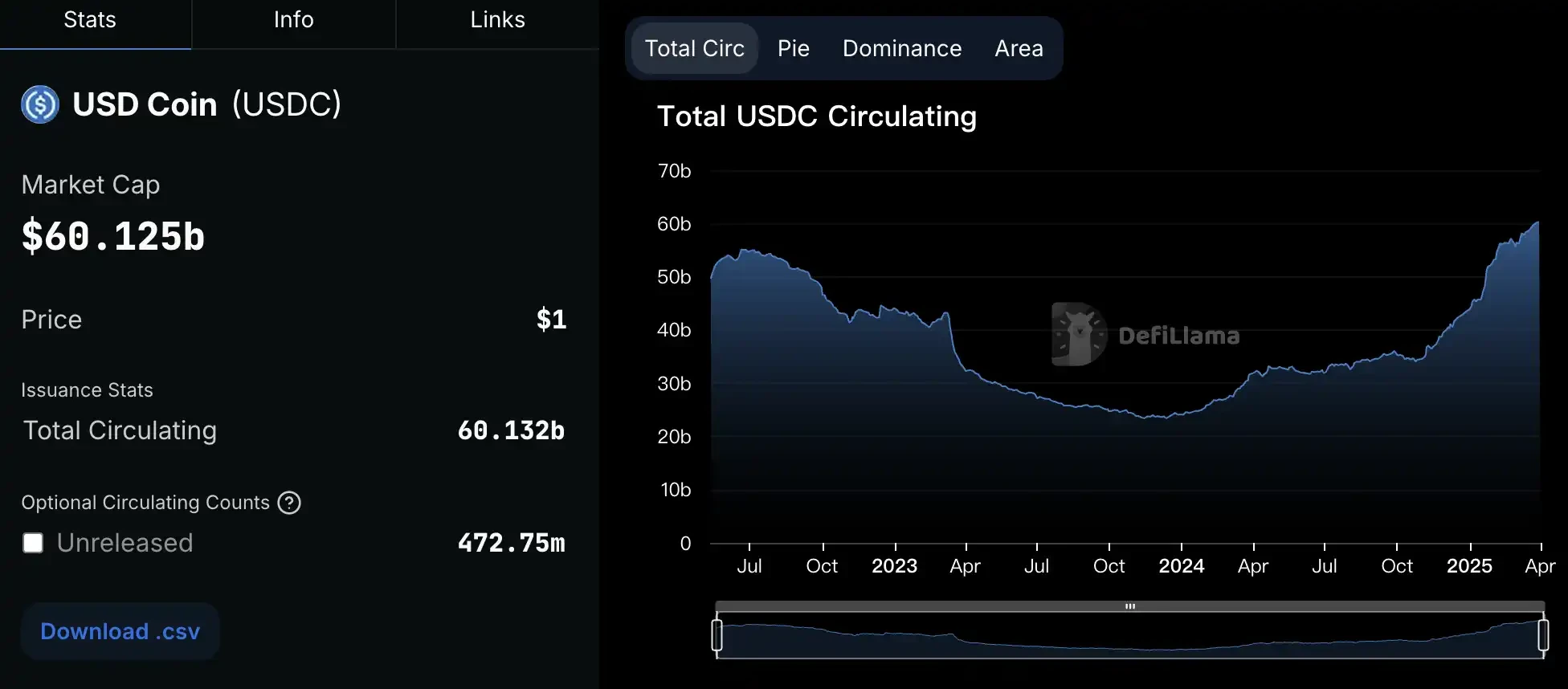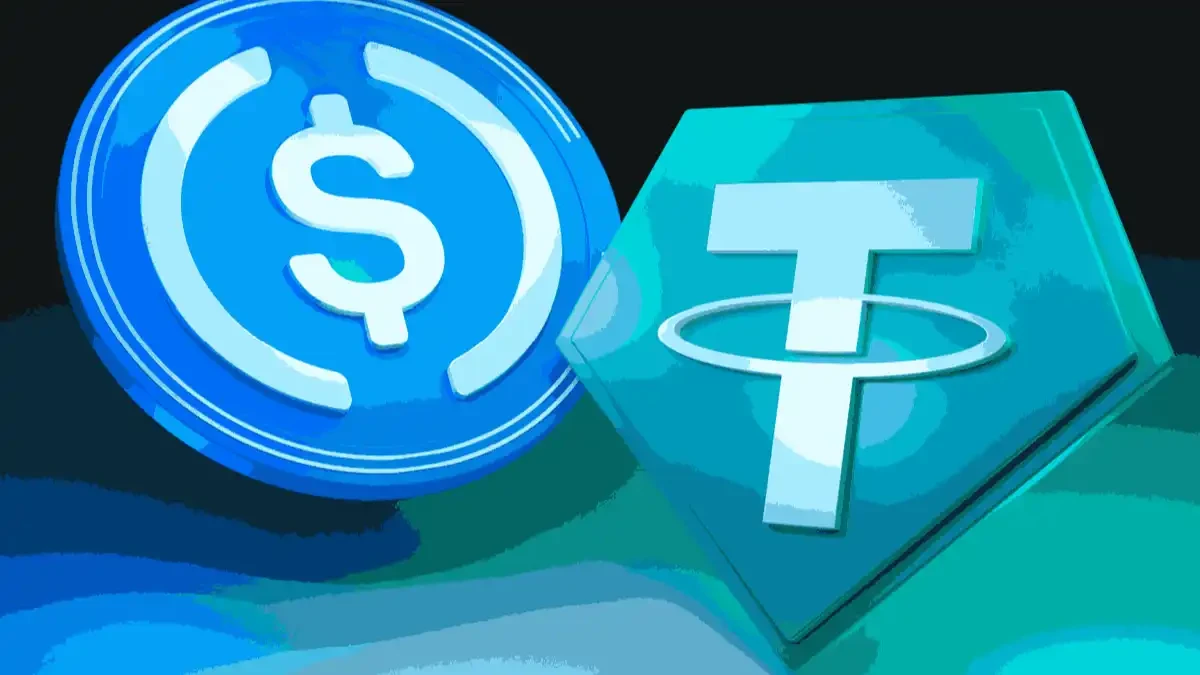On March 31, 2025, the cryptocurrency industry received significant news. According to a report by Fortune magazine, the issuer of the US dollar stablecoin USDC, Circle, is actively advancing its IPO plans. It has now hired JPMorgan and Citibank as underwriters and is expected to officially submit its public offering documents by the end of April, with a target valuation set between $4 billion and $5 billion, bringing the market's attention back to the recently popular stablecoin sector.
Circle's IPO Returns
This is not Circle's first IPO plan. As early as 2018, Circle showed interest in the public market. At that time, Circle quickly rose to prominence by acquiring the cryptocurrency exchange Poloniex and launching USDC. In the same year, Circle announced it had secured $110 million in funding, led by Bitmain, with continued investment from existing shareholders like IDG Capital and Breyer Capital, reaching a valuation of $3 billion. This round of financing may have been a signal for Circle to pave the way for a future IPO, but the brutal bear market in the crypto market and a 75% drop in Circle's valuation in early 2019 pushed the IPO plans off the agenda.
What truly brought Circle closer to the public market was the SPAC (Special Purpose Acquisition Company) in 2021. In July 2021, Circle announced a merger with the SPAC Concord Acquisition Corp. However, Circle soon faced regulatory headwinds. The U.S. SEC intensified its scrutiny of SPAC transactions, requiring stricter financial disclosures and compliance measures. In December 2022, the deal between Circle and Concord fell through due to the failure to obtain SEC approval, and the company publicly stated it was "terminating the SPAC plan." In the following three years, Circle focused on enhancing the compliance and market penetration of USDC, such as partnering with Visa to expand payment scenarios and applying for regulatory licenses globally.
Related: Reviewing Circle: Financing with Bitcoin's Story, Going Public with Stablecoin's Story
To understand Circle's IPO plans, one must mention the successful experience of its partner Coinbase. On April 14, 2021, Coinbase went public on Nasdaq, becoming the first large cryptocurrency exchange to list in the U.S. The opening stock price surged from $250 to $328.28, reaching a peak of $429 during trading, with a market capitalization of up to $64.5 billion. Coinbase CEO Brian Armstrong has stated that he hopes USDC will become "the world's largest stablecoin." If Circle's IPO is successful, it will not only inject funds and resources into this goal but may also further solidify the strategic alliance between the two companies.
The relationship between Coinbase and Circle goes beyond ordinary cooperation. In 2018, the two companies jointly launched USDC. As Circle's core product, the issuance and management of USDC rely on Coinbase's support, while Coinbase actively promotes USDC through its platform. By 2025, USDC's market capitalization has exceeded $60 billion, making it the second-largest stablecoin after Tether (USDT). Coinbase not only supports Circle in technology and market promotion but also holds a stake in Circle, adding more intrigue to Circle's IPO.

Related: Interview with Circle Founder: Reflections on Circle's Tumultuous Decade
Circle vs. Tether: Rivals in the Stablecoin Arena
In the stablecoin market, Circle's USDC and Tether's USDT view each other as primary competitors. USDT holds the top position with a market capitalization of about $140 billion, while USDC closely follows with $60 billion. Although there is still a gap in market share, Circle is gradually narrowing the distance with Tether due to its compliance and transparency.
Since its launch in 2014, Tether has become the dominant player in the stablecoin market due to its first-mover advantage and wide range of applications. However, Tether's rise has not been without controversy. The transparency of its reserve assets has always been a focal point for regulators and investors. Although Tether claims that its USDT is fully backed 1:1 by U.S. dollars or other equivalent assets, the lack of multiple audit reports and questions about its reserve composition have drawn criticism.
In contrast, Circle has taken the lead in compliance. Every USDC token is backed by audited U.S. dollar reserves, and Circle regularly publishes attestation reports from top accounting firms. This transparency has not only won favor with traditional financial institutions but has also made it a "top student" in the eyes of regulators. For example, Circle has obtained money transmission licenses in several U.S. states and has chosen France as its European headquarters to expand its global market presence. In 2024, Circle also received regulatory approval in Japan to launch USDC, further enhancing its international influence.

Related: WSJ: The Life-and-Death Battle Between Tether and Circle
The profit logic of stablecoins is not complex. Taking Tether as an example, after users exchange U.S. dollars for USDT, Tether invests these funds in low-risk assets such as U.S. Treasury bonds and money market funds, earning interest while maintaining the 1:1 peg of USDT to the U.S. dollar. During the high-interest rate period from 2022 to 2024, U.S. Treasury yields once exceeded 5%, bringing substantial returns to Tether. Additionally, Tether increases revenue by charging withdrawal fees and sharing profits with partners. Tether achieved a profit of up to $13 billion in 2024, a figure that even surpassed the annual revenue of the world's largest asset management company, BlackRock. This business model incurs almost no costs while continuously generating cash flow, making it a "money printer in the digital age."
Circle's USDC adopts a similar profit model, but due to its smaller market capitalization, its revenue naturally does not match Tether's. However, Circle's transparency and compliance have won it more institutional clients. For instance, Visa and Mastercard have integrated USDC into their payment networks, and BlackRock has indirectly supported the application of USDC through its BUIDL fund. If Circle's IPO can successfully raise billions of dollars, it may accelerate its expansion in the institutional market and narrow the revenue gap with Tether.
Stablecoin Legislation Boosts Momentum
Circle's decision to push forward with its IPO this year is closely tied to the improving external environment. Since Trump's election, he has repeatedly publicly supported the development of cryptocurrencies, promising to make the U.S. a "global crypto hub" and emphasizing the dollar's dominant position in the digital economy. As an important vehicle for the digitization of the dollar, stablecoins have naturally become a policy focus.
As of April 1, 2025, the legislative process in the U.S. regarding stablecoins has accelerated, with the GENIUS Act and the STABLE Act drawing significant attention. The GENIUS Act, proposed in 2024, requires that the reserve assets of stablecoin issuers be 100% backed by cash or cash equivalents and subject to regular audits. It passed the Senate Banking Committee vote on March 13 of this year with 18 votes in favor and 6 against, and is set to enter a full Senate vote, with Bo Hines, the executive director of the President's Digital Asset Advisory Committee, expecting it to be sent to Trump for signing as early as June. Meanwhile, the STABLE Act is steadily advancing in the House of Representatives, with a markup scheduled for April 2. Both chambers are coordinating the details of the legislation, and the Trump administration has clearly expressed support, promising to sign it into law swiftly once passed. This progress provides favorable policies for compliant stablecoin companies like Circle and marks an increasingly clear regulatory framework for the U.S. in the digital dollar space.
Related: Why Did the Crypto Market Lose $900 Billion While Stablecoin Market Cap Hit a Record High?
Additionally, the EU's MiCA regulation was fully implemented in 2024, imposing higher transparency and capital requirements on stablecoin issuers. Circle was the first to establish its European headquarters in France, demonstrating its commitment to global compliance. Countries like Japan and the UK are also accelerating the formulation of stablecoin regulatory policies, providing clearer guidance for industry development.
The implementation of stablecoin legislation may have far-reaching effects on the market landscape. For Circle, a successful IPO could not only provide funding support but also promote greater adoption of USDC in compliant markets. In contrast, Tether faces greater regulatory pressure and may need to adjust its reserve structure or even sell off some non-cash assets. It is foreseeable that as the regulatory environment clarifies and institutional funds enter the market, the stablecoin market may undergo a new round of reshuffling, with Circle's IPO potentially serving as an important catalyst in this process.
Cryptocurrency IPO Process Heats Up
Against the backdrop of gradually clarifying stablecoin regulations, Circle's IPO plans may be just a microcosm of traditional capital entering the crypto market. The push from policies not only paves the way for stablecoin issuers like Circle but also opens the door for more crypto companies to Wall Street. Bitwise predicted at the end of last year that five companies (including Circle) might go public in 2025:
Circle: Issuer of the second-largest stablecoin USDC.
Figure: The company is known for its blockchain-based financial services (such as mortgages, personal loans, and asset tokenization) and has been exploring an IPO since last year.
Kraken: The IPO plans of this U.S.-based cryptocurrency exchange date back to 2021.
Anchorage Digital: Its status as a federally chartered bank may pave the way for its public listing.
Chainalysis: A leader in blockchain compliance and intelligence services, it is expected to go public.
Additionally, Hadick from Dragonfly stated, "I expect the LP (limited partners of crypto venture capital firms) market to improve, and they will want to invest more funds into cryptocurrencies. Many traditional Web2 crossover funds will return to the Web3 space. We have already seen this trend in certain areas, such as stablecoins and payments." He added that venture capital deals often lag behind public market price increases by one or two quarters.
Related: Forbes: Cryptocurrency Will Be Redefined in 2025
Circle's IPO may become a barometer for the development of the stablecoin industry. With the gradual clarification of the global regulatory environment, stablecoins are entering a golden age of compliance and institutionalization. Can Circle leverage this momentum to further challenge Tether's dominance? The answer will be revealed in the market performance following the IPO.
免责声明:本文章仅代表作者个人观点,不代表本平台的立场和观点。本文章仅供信息分享,不构成对任何人的任何投资建议。用户与作者之间的任何争议,与本平台无关。如网页中刊载的文章或图片涉及侵权,请提供相关的权利证明和身份证明发送邮件到support@aicoin.com,本平台相关工作人员将会进行核查。




